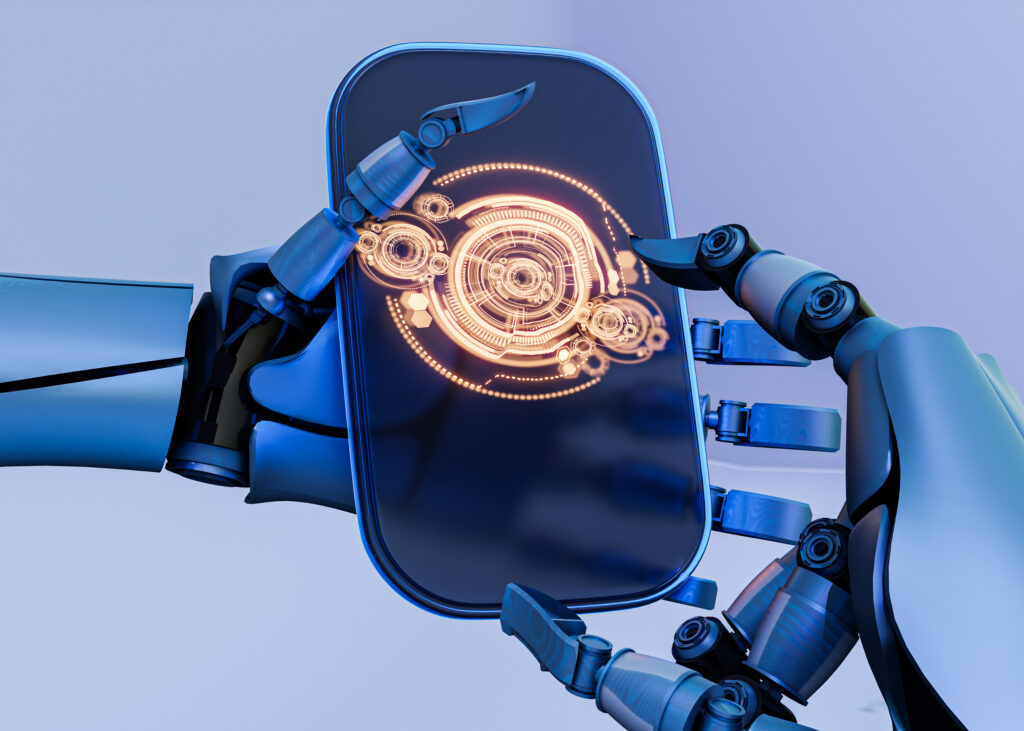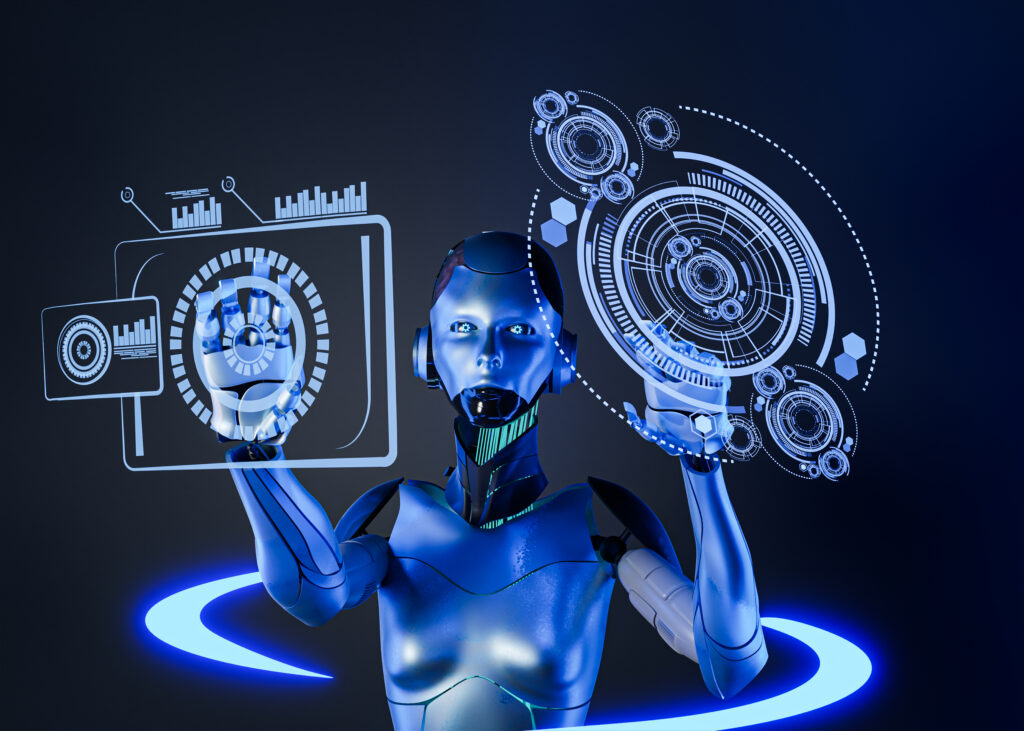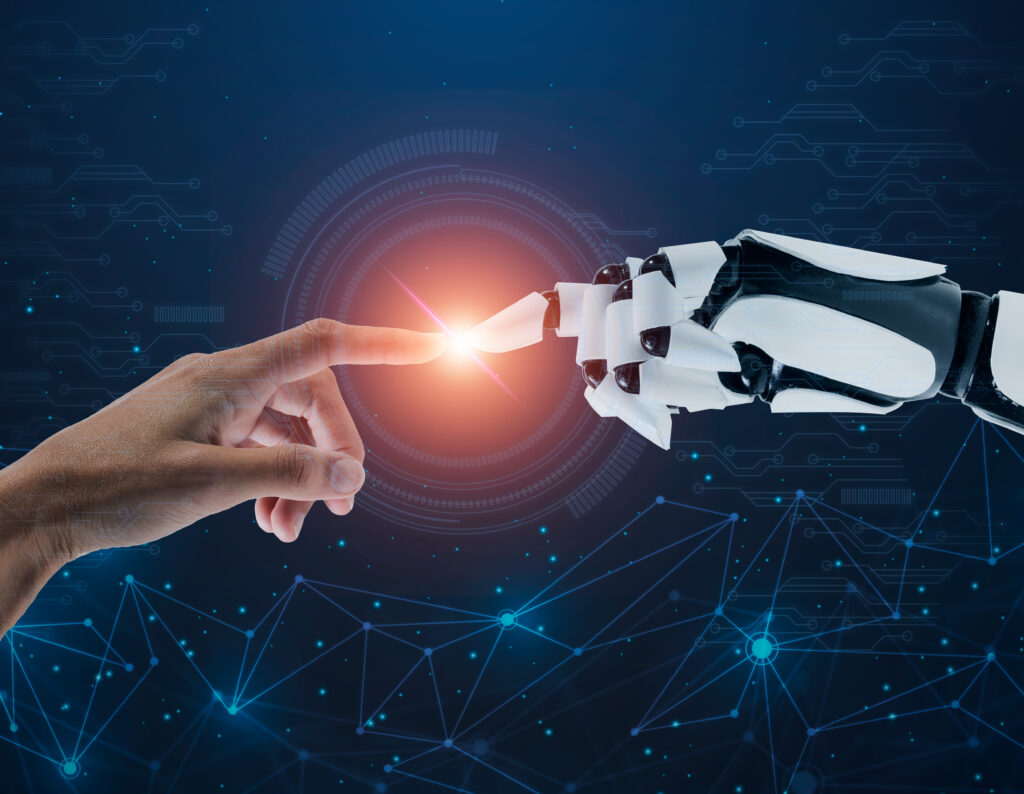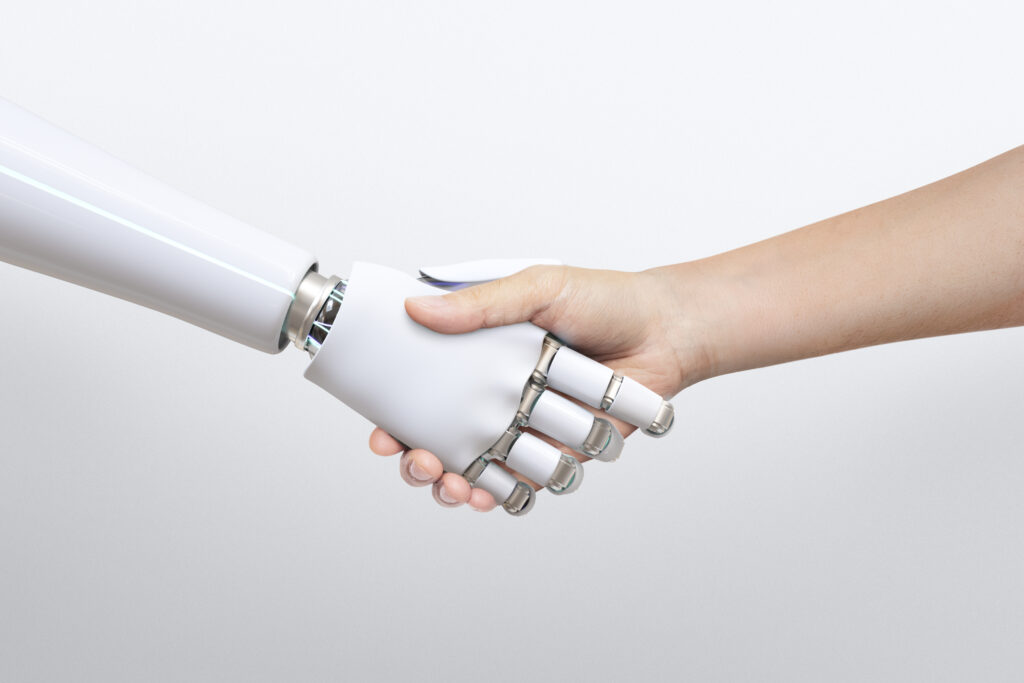Future Art’s Dependency on Machine Intelligence
As technology and creativity merge, art’s future will depend on artificial intelligence. This shift isn’t just about making tasks easier; it’s about opening new doors for artistic expression. AI in art allows creators to venture into previously untouched areas, blending classic techniques with futuristic insights. This combination could challenge our understanding of creativity, pushing us to think differently about what art is.
The role of AI in art is not just about efficiency; it’s about expansion. Artists are given tools to push the boundaries of their imagination, creating work that was once thought impossible. This evolution in art invites a broader conversation on how AI might change the art world. It’s a topic that touches on creativity, technology, and the future of artistic expression.
In a nutshell, AI in art is more than a trend; it’s a new way to think about and create art. As we move forward, the integration of AI in the art world will likely become more pronounced, shaping new artistic landscapes and redefining our concept of creativity.
Key Takeaways
- Artists collaborate with AI for unprecedented creations.
- AI makes art more accessible and interactive.
- Raises questions about AI’s role in creativity.
Collaboration with AI enables artists to produce works never seen before. This partnership makes art more engaging and broadens its reach, inviting more people to create. Additionally, it sparks discussions regarding how technology influences the creative process, making these advancements crucial in evolving our interaction with art.
The Evolution of Art
The evolution of art is now deeply intertwined with machine intelligence, heralding a significant shift in how we create and appreciate art. This change goes beyond just using new tools; it’s about a profound blend of AI’s capabilities with human creativity. Once solely dependent on their skills and imagination, artists embrace AI to expand their creative possibilities. This partnership between human creativity and machine algorithms is crafting new art forms, challenging the limits of traditional artistic expression.
AI’s role in art is transforming the way artists work, offering them fresh methods and insights. This collaboration creates a unique interaction where technology acts as a tool and a partner in the creative process. As artists adapt to and utilize AI’s abilities, the art world is experiencing a significant change. This challenges old ideas about art and opens up a future where human creativity and machine intelligence come together to redefine art.
In this era, creating art through AI provides artists innovative ways to express their visions, making the artistic process more dynamic. This shift is essential because it opens new possibilities for creativity and expression. Using AI, artists can explore ideas and create once-impossible works, pushing the boundaries of what art can be. This fusion of technology and creativity is changing how art is made, and we think about it.
AI’s Creative Tools

The rise of AI in art has been groundbreaking, enabling artists to create unique and diverse pieces. With tools like Generative Adversarial Networks (GANs) and image transformation algorithms, artists can blend styles and techniques in novel ways. This has opened up a whole new world of creative possibilities.
AI’s speed and efficiency in generating art are unmatched. Artists can create quality work faster, increasing their output. Platforms like Runway create spaces where artists and AI can collaborate, leading to fresh and innovative art. This partnership between human creativity and artificial intelligence pushes what’s possible in art to new limits.
Incorporating AI in the art-making process provides new ways for artists to express themselves and creates captivating and thought-provoking artwork. This fusion of AI and human creativity is ushering in a new age of artistic expression, where the only limit is the artist’s imagination.
Generative Art Explained

Generative art marks a new era in the creative industry, using autonomous systems like AI algorithms to push the boundaries of what we consider art. It employs cutting-edge tools such as DALL-E and Stable Diffusion to automate artwork creation, opening up possibilities for unique artistic expressions. This blend of technology and creativity changes how we see the artist’s role and demonstrates the growing power of artificial intelligence in developing new types of art.
In this approach, the process becomes as important as the final piece, offering a window into the endless potential of combining human creativity with machine precision. It’s not just about the final artwork; it’s about the journey there, driven by code and algorithms. This innovation in art challenges us to rethink the limits of creativity and the potential of technology to contribute to the world of art.
Defining Generative Art
Generative art is where autonomous systems like AI and algorithms come into play, creating constantly changing and unique art. This area uses AI tech such as Generative AI, neural networks, and deep learning to let artists set rules that shape art creation. It shakes up who gets to be called an artist and pushes the limits of creativity.
| Aspect | Influence on Art | Example |
|---|---|---|
| Generative AI | Dynamic outcomes | GANs |
| Neural Networks | Diverse expressions | AI-generated imagery |
| Deep Learning | Novel creativity | AI-designed patterns |
Generative art merges art with technology, showing how AI can change our thoughts about art and its future possibilities.
Tools and Techniques
Generative art is transforming how we think about creativity, thanks to Artificial Intelligence (AI). This form of art uses algorithms to create pieces that are always unique and often surprising. Generative Adversarial Networks (GANs) and style transfer algorithms are two examples of AI tools artists use to push the limits of what’s possible. They allow for a level of experimentation that wasn’t imaginable before.
Creative Process Automation
The fusion of artificial intelligence with the art world transforms how we create. It’s like having a new type of paintbrush that can make an infinite number of strokes. This AI-driven art, known as generative art, is a game-changer. It’s not just about making art; it’s about creating pieces that can change and grow.
Using technology, artists now have a vast new landscape to explore. This isn’t just about computers doing the work. It’s a partnership where AI collaborates, bringing previously unimaginable ideas to life. This evolution in art-making is significant. It shows us that creativity isn’t limited to human hands and minds.
The ever-changing nature of generative art mirrors the rapid advancements in technology. It’s a clear sign that the future of art will be deeply intertwined with technological progress. This blending of creativity and innovation opens up endless possibilities. It’s an exciting time to be an artist or an art lover as we stand on the brink of a new era in artistic creation.
Artists and AI Collaboration

The collaboration between artists and AI transforms art, offering new ways to blend technology with human creativity. Artists are using AI to push the boundaries of their work, creating a partnership where AI tools become an integral part of the creative process. This cooperation does more than improve the look and concept of artworks; it pushes the entire art world forward, merging tech and creativity like never before.
Using AI, artists can venture into new creative lands that were once out of reach. This partnership doesn’t just change how art looks; it’s reshaping the art industry’s future, making a space where innovation and creativity flow together effortlessly.
Enhancing Creative Processes
Integrating artificial intelligence with the artistic world is ushering in a new age of creativity. This collaboration allows artists to craft pieces with complexity and inventiveness not seen before, using AI tools like Midjourney to explore new possibilities. It’s not just about making the process of creating art more efficient; it’s a complete reshaping of how art is conceived.
- Empowerment: Artists now have tools that broaden their range of expression at their disposal.
- Efficiency: AI speeds up art creation, making it easier to try out new ideas quickly.
- Innovation: The emergence of new art forms is challenging what we traditionally understand by art.
This shift suggests that artificial intelligence will become a fundamental part of the art world, encouraging a rich mix of diversity, innovation, and new frontiers in artistic expression.
AI as Artistic Medium
The art world is seeing a significant transformation, with artists now using Artificial Intelligence (AI) as a tool for creating unique pieces. This new approach has opened doors to various previously unimaginable possibilities for artistic expression. Artists are teaming up with AI technologies, such as Generative Adversarial Networks (GANs), image style transfer techniques, and art-focused chat applications, to produce art in ways that blur the lines between human and machine creativity.
This partnership does more than bring a fresh perspective to art creation; it’s reshaping how we understand the concepts of originality and creative ownership. It’s a step towards a future where artists and AI work hand in hand, pushing the boundaries of what can be achieved in art. This shift introduces new art forms and fosters a deeper connection between technology and human creativity.
Collaborative Artistic Expression
The collaboration between humans and AI in art changes how we see and create. It’s like adding a new palette of colors to an artist’s toolkit, allowing for fresh and innovative creations. This partnership doesn’t just push art into new territories; it also enriches the artist’s process by combining human creativity with the computational abilities of AI. As a result, we’re seeing unique artworks that reflect the shared effort of humans and AI.
This blend of art and technology isn’t just a passing trend; it’s paving the way for a future where they’re deeply connected, opening up exciting new possibilities for creativity. Through this collaboration, art is evolving into forms we’ve never seen before, marking the beginning of a new chapter in the art world where innovation is constant.
Expanding Expression Horizons

Artificial intelligence in art breaks down old walls, allowing new types of creativity. It mixes classic art techniques with cutting-edge computer methods. Now, artists have more tools for creating something unique, thanks to algorithms that learn as they go. This blend opens doors to styles and ideas that were hard to reach before, speeding up how artists develop new concepts.
AI in art is more than a passing trend; it’s changing the game. Artists are exploring territories once thought impossible, sparking a wave of innovation. AI transforms the art-making process, introducing a fresh chapter in artistic discovery. This shift in the approach to art highlights the crucial role of artificial intelligence in offering new ways to express ourselves, marking the start of an adventurous journey in art.
Redefining Art’s Essence
Creativity takes on a new form in a world where technology and art blend. This change is mainly due to Artificial Intelligence (AI), which acts as a tool and a partner in the creative process. Artists now use AI technologies like Generative Adversarial Networks (GANs) and style transfer algorithms to create art, pushing traditional creativity’s envelope.
This fusion of AI with the arts leads to:
- New ways of expressing that question our old ideas about creativity.
- Collaborative efforts between humans and machines expand what’s possible in art.
- Varied interpretations of art encourage viewers to interact with it in more ways than just visually.
Looking ahead, AI’s role in art will only get bigger. It’s transforming how art is made and opening up new possibilities for creativity. AI is not just changing the nature of art; it’s paving the way for a future where the limits to artistic creation are virtually nonexistent.
Ethical Considerations
The use of machine intelligence in art creation raises significant ethical questions, particularly about right and wrong and the issue of originality in AI-created art. Determining who should get credit for the artwork is crucial, and how much we should value the human touch in creations made with AI’s help. Artists and tech experts must collaborate to set transparent and fair rules for AI’s involvement in art moving forward.
This teamwork is vital to keep the art world honest and respectful. It’s not just about making rules but ensuring that combining technology and human creativity enriches the art industry without diminishing the artist’s role.
Moral Implications
The ethical challenges in creating AI-generated art spotlight the need for clear rules on who owns and can claim such art. There’s a risk of using AI in art without properly crediting it, which could harm the integrity of artists.
It’s vital to discuss ethically using AI in art to ensure we respect human creativity while moving forward with new technology.
Creating art with AI responsibly shows we’re committed to high ethical standards.
Creative Authenticity Concerns
As the use of artificial intelligence (AI) in the art world grows, so do the debates about whether these creations are original and authentic. The line between what’s made by humans and what’s made by machines is getting blurrier. This shift is sparking many discussions about who owns a piece of art when AI is involved and what it means to be creative.
With AI becoming more involved, we’re forced to rethink our ideas about creativity and ownership in the arts. This change is stirring up ethical questions about the integrity of art and what it means for something to be created genuinely. As technology changes how art is made, it’s important to keep talking about how this affects the value and understanding of art today.
Overcoming Technical Challenges
Integrating machine intelligence in art creation marks a significant leap forward, making it easier to tackle old technical challenges. This shift has transformed how quickly and effectively art, particularly in graphic design, can be produced. Now, artists have tools that allow for a surge in creativity, letting them explore artistic avenues that once seemed out of reach.
These technological improvements allow artists to churn out art faster and take on more significant projects. They’re no longer bogged down by the mundane parts of the process, which means they can spend more time dreaming up new ideas and pushing the envelope in their creations. This freedom has led to a surge in art’s diversity and uniqueness.
One of the biggest perks of using AI in art is its endless stream of new ideas and inspirations. This means artists are never short on inspiration, leading to a broader variety of artworks that might not have been possible.
These advancements have dramatically shifted the landscape of art creation. Artists empowered by technology are redefining what’s possible, ensuring the art world remains vibrant and ever-evolving.
Future Artistic Landscapes
The rise of artificial intelligence (AI) in the art world is creating exciting new opportunities for how art is made and shared. This isn’t just about using new tools; it’s about rethinking the whole art creation process and who can be involved. By combining human creativity and AI, we’re looking at a future where art can go in directions we’ve never seen before.
| Aspect | Traditional Art | Future Artistic Landscape |
|---|---|---|
| Creation Process | Focused on humans | Collaboration with AI |
| Accessibility | Limited | Made easier by AI |
| Art Forms | Known and recognized | Exploring new possibilities |
| Innovation | Slow and steady | Rapid with AI |
In this new age, AI is more than just a tool; it’s a creative partner. It makes art more accessible, tearing down walls that kept many from creating or enjoying art. AI isn’t just improving old art-making methods; it’s pushing us into new areas with endless room for innovation. Art’s future looks like a mix of technology and human imagination, creating a space where art can go beyond what we’ve always known.
Art made with AI is not just about the new and unknown. It’s about making the art world open to everyone, changing how we think about who can create art and what art can be. This shift towards AI collaboration in art promises to bring out new forms of creativity and expression that we’re just beginning to imagine.
Audience Engagement Revolution
In today’s art scene, artificial intelligence makes waves by offering unique and interactive experiences that deeply connect with individuals. This technology allows art to adapt in real time, engaging the audience in unprecedented ways. It’s transforming how we interact with art, making every encounter a personal and immersive journey.
Personalization in art has reached a new level, thanks to AI. Each person’s experience can be customized, ensuring the artwork speaks to them personally. This shift moves away from the traditional, one-size-fits-all approach to art, offering a more meaningful connection for each viewer.
Interactivity has also been elevated through AI. Art installations that adapt based on audience feedback invite everyone to contribute to the creative process. This deepens the connection with the artwork and gives people a sense of belonging and ownership over the experience.
Immersion is another area where AI is making a significant impact. Art installations are now designed to offer a more engaging experience, pulling the audience into the artwork. This allows individuals to experience art from the inside out rather than just observing from a distance.
AI is not just improving how we engage with art; it’s changing the essence of the experience. The focus on interactivity, personalization, and immersion reshapes our relationship with art, making it more relatable, engaging, and profound.
Frequently Asked Questions
How Will AI Affect the Future of Art?
- AI shapes art, stirring ethics and authenticity debates.
- Artists redefine identity through innovation.
- AI impacts cultural perception significantly.
Why Will Artificial Intelligence Be Important in the Future?
- AI automates complex decisions, making processes faster.
- Intelligent systems augment human capabilities, boosting productivity.
- Ethical considerations in AI development protect societal values.
How Is Artificial Intelligence Used in Art?
- AI transforms art with innovative tools.
- Digital sculptures and interactive pieces redefine engagement.
- Neural networks introduce a new era of creative expression.
How Does Machine Learning Create Art?
- Machine learning turns data into art using algorithms.
- Neural networks create unique art by learning from existing works.
- This showcases computational creativity in generating new artistic visions.
Conclusion
The use of machine intelligence in art is changing the game. Artists can now break through old limits and bring fresh, innovative ideas to life. This shift is making art more interactive and accessible to everyone. It also opens up conversations about the role of AI in creative processes. As technology improves, we see a significant change in how we create and understand art.
Artists teaming up with AI are creating once-impossible work. This partnership is making art more exciting and engaging for audiences. It’s also making it easier for anyone to start building, which is a big step towards making art more inclusive. Plus, working with AI raises exciting questions about creativity and technology. These collaborations will only deepen as we progress, changing our relationship with art.